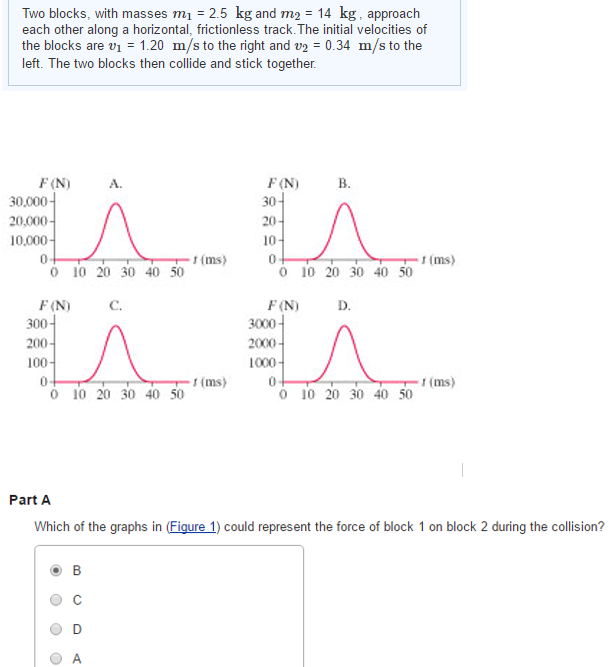Two blocks, with masses m1 = 2.5 kg and m2 = 14 kg, approach each other along a horizontal, frictionless track. The initial velocities of the blocks are v1 = 1.20 m/s to the right and v2 = 0.34 m/s to the left. The two blocks then collide and stick together. Part A Which of the graphs in (Figure 1) could represent the force of block 1 on block 2 during the collision? B C D A
